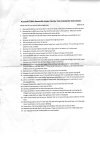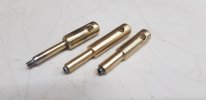David Price
Registered
Interestingly the seller in the US had two for sale - both "test run" only - the one I did not purchase had the larger gas tank installed under the cab floor.Thanks. Great to see 7/8ths on this site. Glad you were able to sort it out. It is a lovely looking engine but they rarely if ever appear for sale.
Best wishes.
General consensus on this loco is that Accucraft ignored some of the design advice they were given (like - don't put the gas tank next to the boiler) - and mine may have been "a Monday or Friday job" as we used to say about certain manufacturer's cars..... And they didn't even spell Decauville correctly on the builder's plates!
Also I didn't point out earlier that half a glass of water in the gauge glass means you are about to expose the burner tube - if this were a real locomotive you would be about to expose the crown sheet with likely catastrophic results. Whilst I realise this will not cause major damage in this scale it is still not good practice (I've also put a copper wire in the gauge glass to keep the water level at a more reliable sighting and have yet to put a zebra pattern sheet behind).
Despite the nice blow-through cock on the glass it needed the internal wire for better readings to sometimes break the meniscus of the water.

![20250717_182525[1].jpg 20250717_182525[1].jpg](https://cdn.gscalecentral.net/2025/07/thumb/545744_20250717_1825251.jpg)

